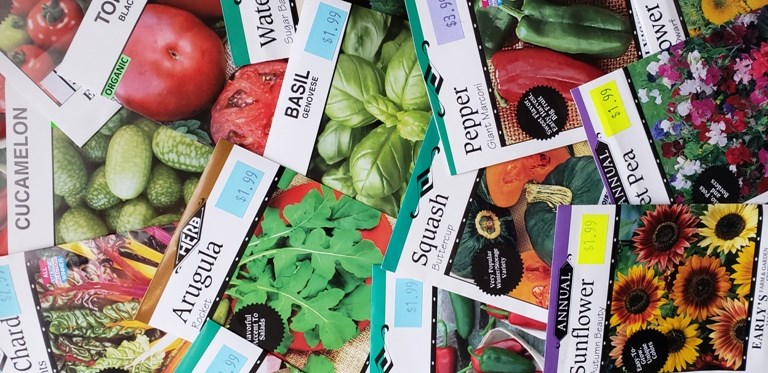This is the perfect time of year to become an armchair gardener. There is enough snow outside that not much can actually be done, so there is time to sit and read, cover to cover, each seed catalogue that arrives in the mailbox. And, if you are not receiving enough catalogues just ask your friends or turn on the computer. There is a whole world of gardening possibilities at your fingertips. The new varieties, the tried and true, the heritage, the odd and unusual or hard-to-find seeds are all out there.
If you find you are having trouble deciding what new seeds to order for the garden, there is plenty of help available. A good source for searching out catalogues is as close as your home computer. Type in “garden seed sources for the prairies” or any variety you can think of and you will be amazed at what appears. If you subscribe to any of the gardening magazines they too will usually contain a listing of different seed suppliers. You have just enough time to read through these listings, pick out a few, order the catalogues or shop online. After all, we likely still will have a few days of winter ahead.
In order to have the most success possible it is helpful to understand a little bit about the common terms used in seed catalogues. Reading the small print about each selection is important. Vegetable varieties are listed with days to harvest, which means from seeding date to when you can actually harvest your vegetables. This will always vary within a week or two depending on the weather. In Saskatchewan you can usually rely on a late spring frost, so be prepared.
Other terms you might need help deciphering include: heirloom, heritage, open-pollinated and hybrid. Many plant varieties are hybrids, meaning the flowers of two related species have been cross-pollinated to produce a new flower or vegetable variety that exhibits superior growth or hybrid vigour. The seed from hybrid varieties will likely be sterile, however, if it does germinate, it is unlikely that the flowers or vegetables will be like the parent plant. In fact, the plants may be sterile and not produce flowers at all. If you wish to save seeds from what you plant, then it will be important to grow open-pollinated also commonly called heritage or heirloom plants. These plants breed true and are not a hybrid cross, so saving seeds from these plants will produce very similar plants when the seeds from these plants are grown.
Last but not least, it is important to understand the difference between annual, biennial and perennial. Annuals are plants that will complete their entire lifecycle in one growing season – germinate, grow, flower and set seed. In less severe climates, what we consider annuals are often perennial in nature – but for us on the prairies they are most definitely annuals. Biennials will take two years to complete their lifecycle and will often only produce vegetative growth the first year and flower and fruit in the following year. Perennials are plants that survive our winter in the great outdoors and live for three years or more.
Watch for more articles coming up on growing wherever you are. Don’t forget to check out the videos on my youtube channel grow as it is sometimes easier to learn by seeing a video than reading https://www.youtube.com/channel/UCzkiUpkvyv2e2HCQlFl0JyQ?
Good luck with your armchair gardening.
Hanbidge is the lead horticulturist with Orchid Horticulture. Find us at www.orchidhort.com; by email at info@orchidhort.com; on facebook @orchidhort and on instagram at #orchidhort.



